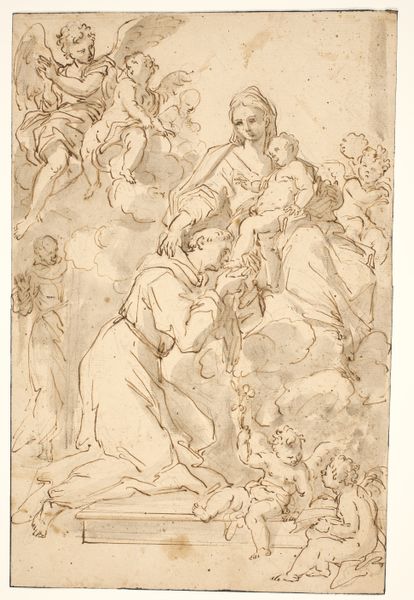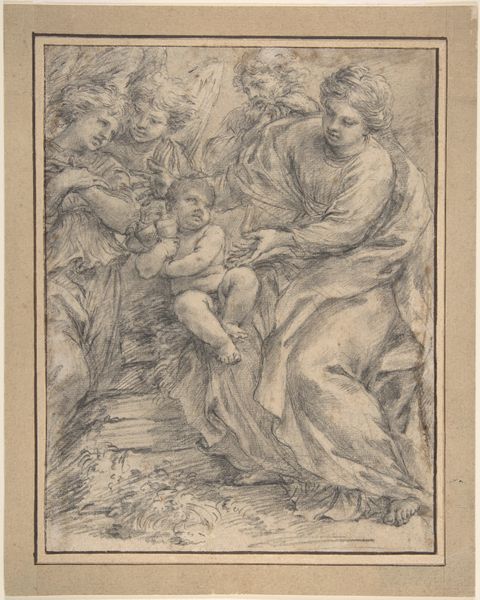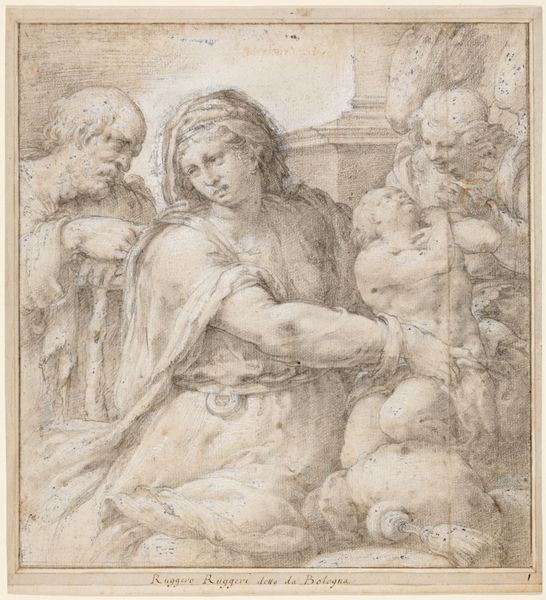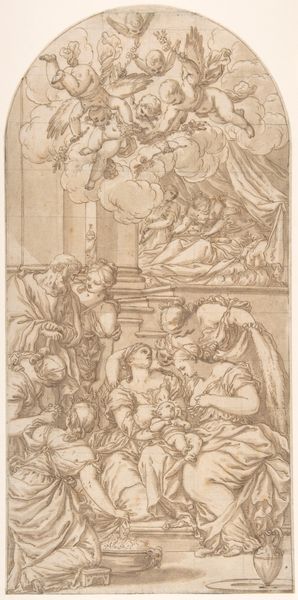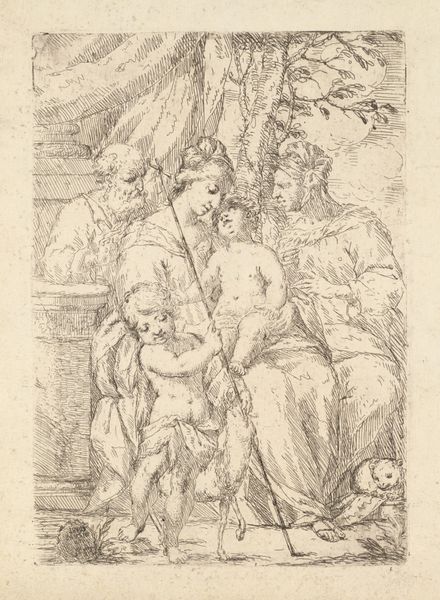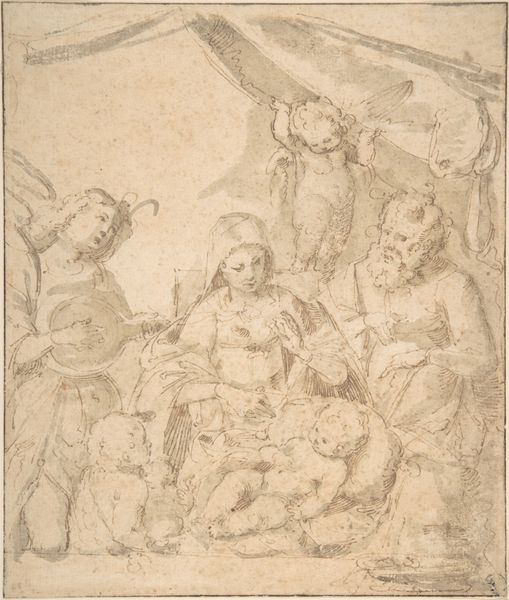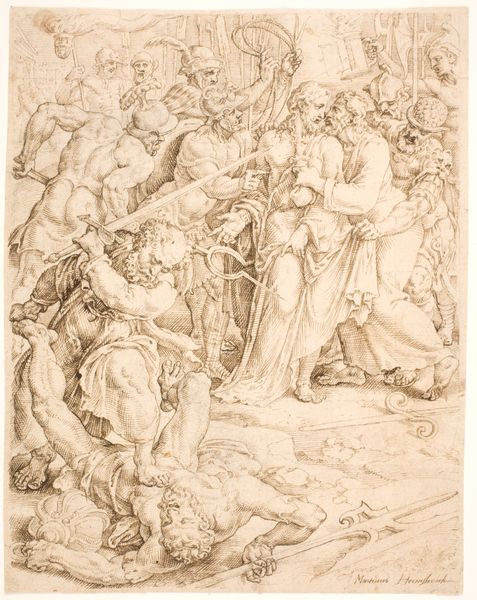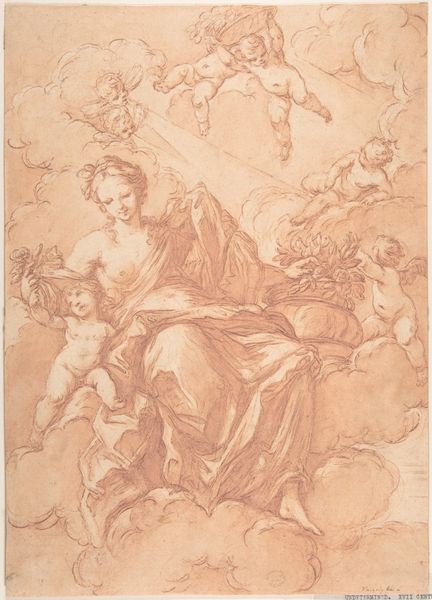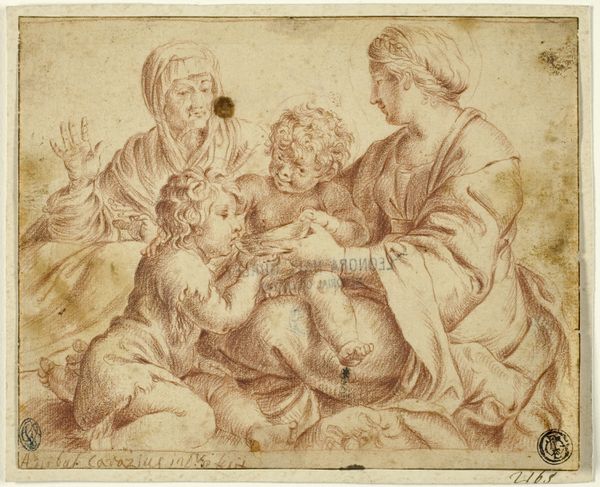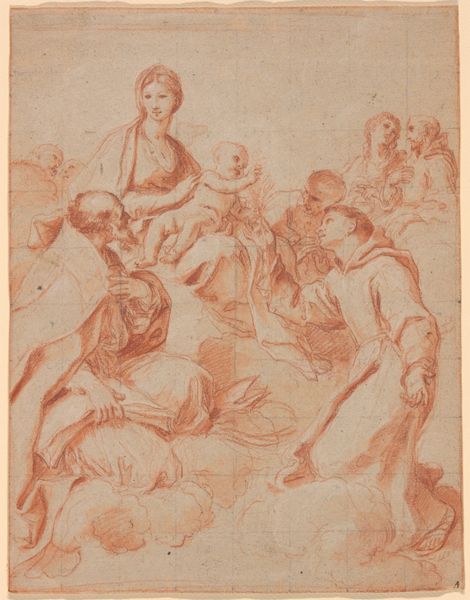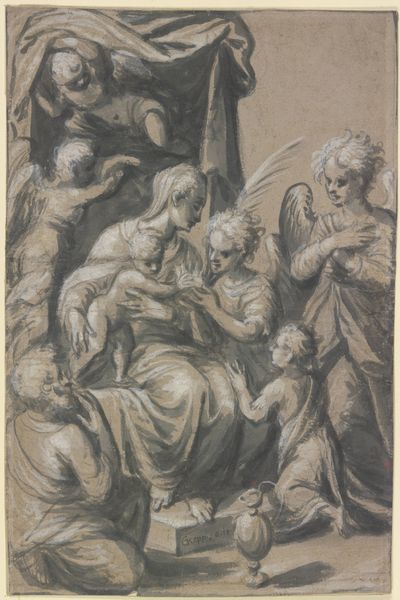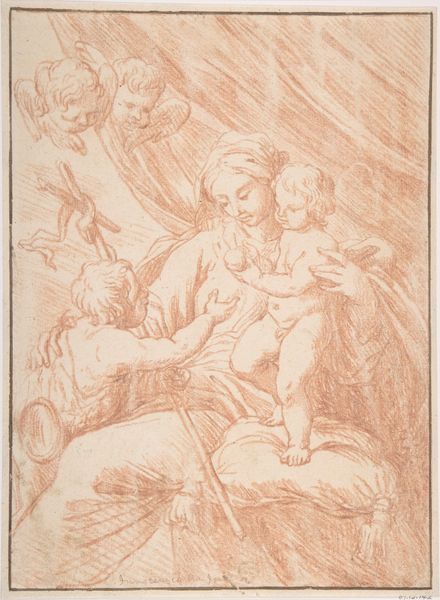
The Holy Family with Saint Philip Neri in Adoration, an Angel, and Putti 1649
0:00
0:00
drawing
#
drawing
#
narrative-art
#
baroque
#
figuration
#
history-painting
Dimensions: sheet: 32.2 × 24.1 cm (12 11/16 × 9 1/2 in.)
Copyright: National Gallery of Art: CC0 1.0
Editor: We're looking at "The Holy Family with Saint Philip Neri in Adoration, an Angel, and Putti," a drawing from 1649 by Giacinto Gimignani. The first thing I notice is how the lines create such a sense of movement. What strikes you about the composition of this piece? Curator: Indeed. Note the masterful employment of line. Observe how the dynamism isn’t solely rendered through active poses. It’s equally driven by the swirling lines of the drapery and the subtle gradations in shading. The artist employs hatching and cross-hatching, thereby fashioning a complex tonal landscape. Have you also marked the strategic use of empty space? Editor: You mean the way the figures are grouped? Curator: Precisely. Notice how the proximity and positioning of figures relative to these blank spaces direct the gaze. This lends itself to a feeling of expansiveness even within the confined area of the paper. Moreover, let’s contemplate the lines themselves: thin and fragile in certain sections to dense and weighty elsewhere. How might you describe their emotional impact on the viewer? Editor: I guess the varied lines create a tension and contribute to a feeling of spiritual intensity. There's almost a sense of anticipation to it. Curator: Quite perceptive. The contrast serves to animate the subject, and the semiotic tension you detected suggests a state of becoming. Gimignani's grasp of the materials is formidable. The texture conjured is far greater than the sum of its constituent lines. Editor: I see that now. I'll definitely pay closer attention to how line work impacts my emotional reaction from now on. Curator: As will I. Thank you for that valuable insight.
Comments
No comments
Be the first to comment and join the conversation on the ultimate creative platform.
